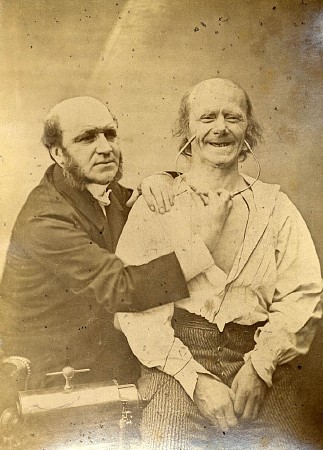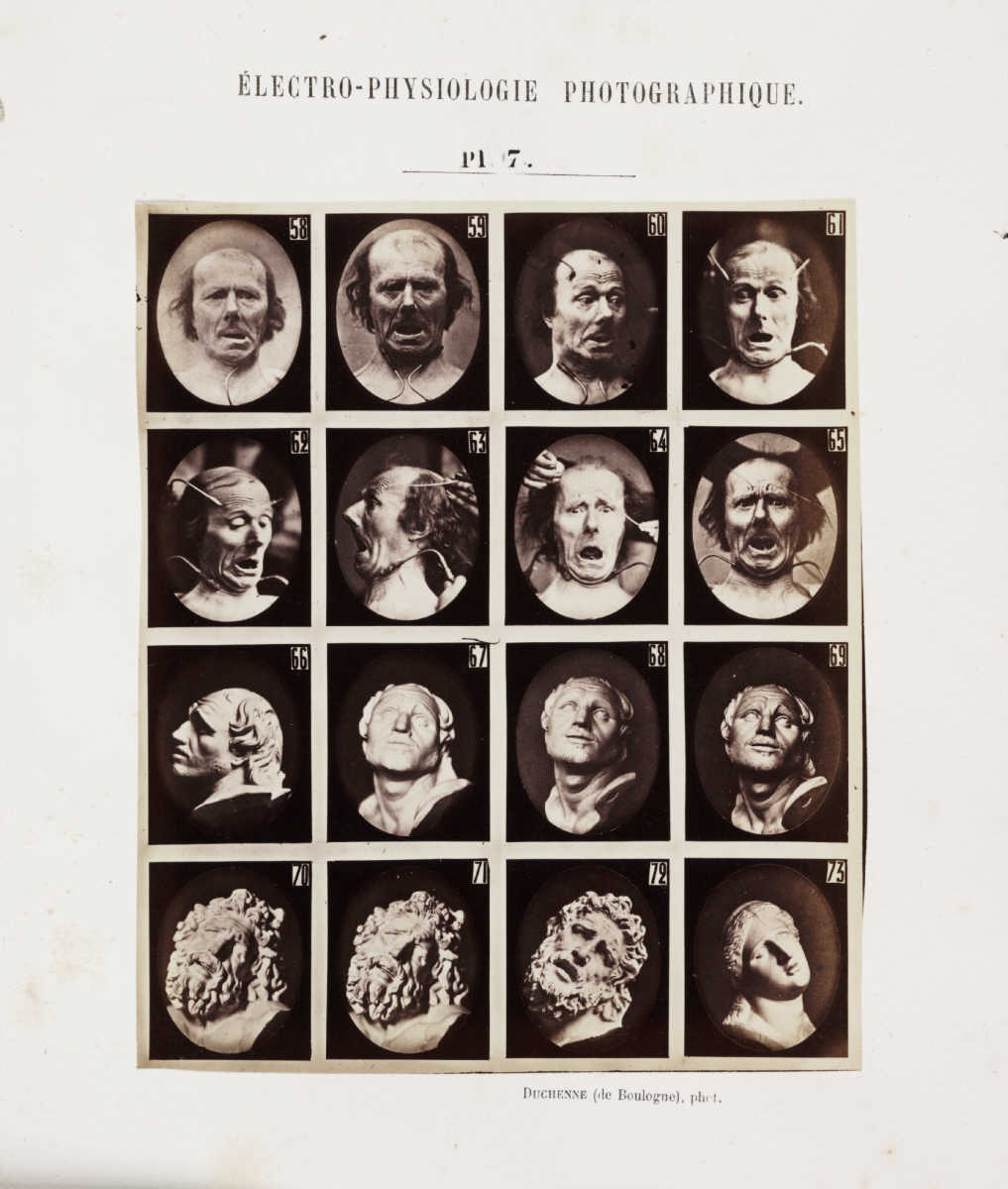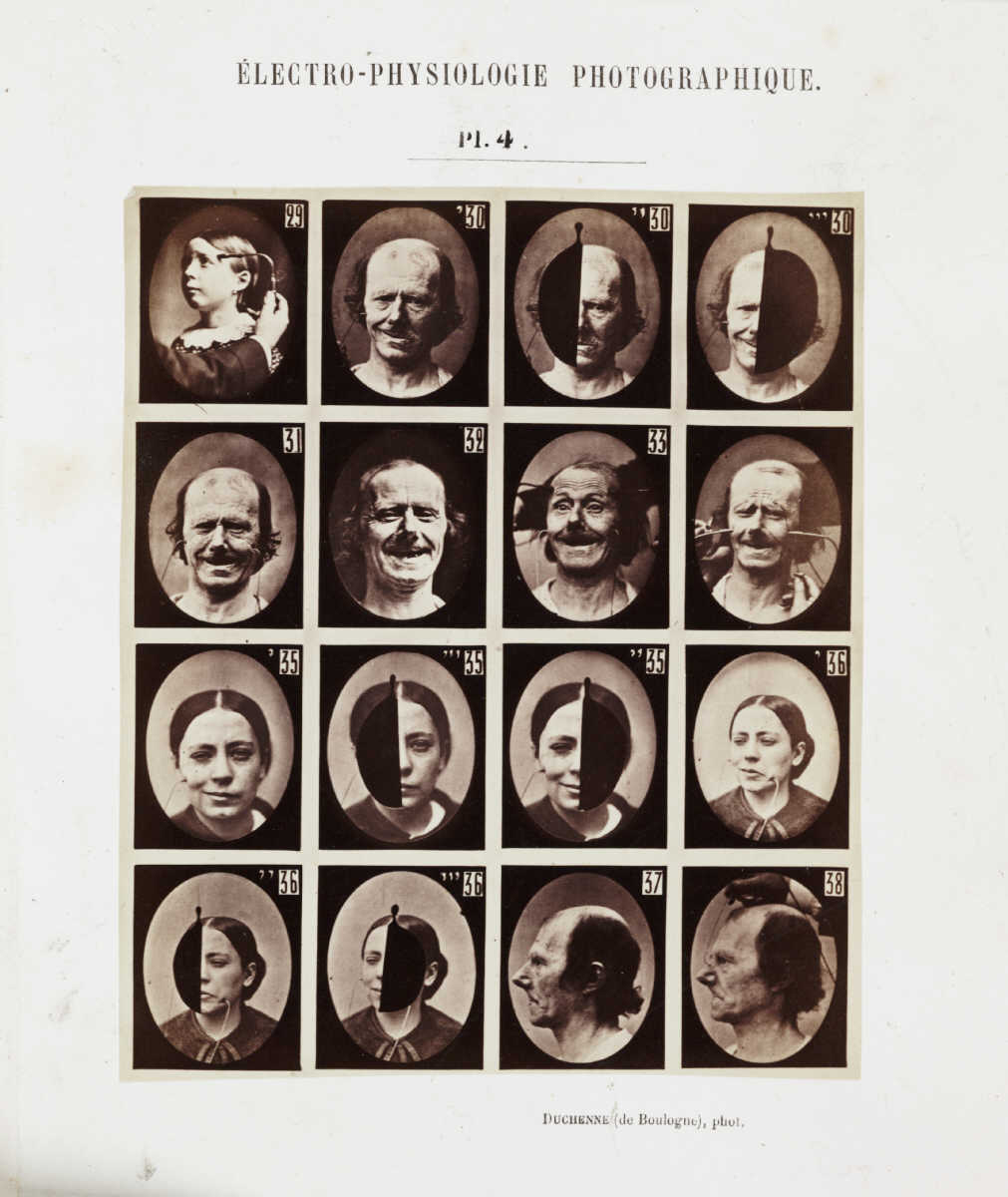were 3 main interests of Guillaume-Benjamin-Amand
Duchenne de Boulogne or simply Duchenne de Boulogne,
a French neurologist, author of the work
"The Mechanism of Human Physiognomy"
(Mecanisme de la Physionomie Humaine, 1862),
one of the developers of electro-physiology and electro-therapeutics.

He took pictures of his patients
In contrast to photos of that period (second half of the 19th century)
he managed to show "genuine" expressions.
"Duchenne de Bologne's experiments can be described as the realization
par excellence of the close connection between photographic
and electrophysiological discourse during the second half of the 19th century.
Duchenne was able to produce facial expressions by changing
the currents that he induced in the experimental object.
He could create emotional expressions by evoking two
or more facial expressions at the same time
which usually corresponded to different emotions
and thereby produced disconcerting photographic portraits of
incomprehensible mimicked expressions"
(http://vlp.mpiwg-berlin.mpg.de/essays/data/art29?p=2)

Charles Darwin used his photos as illustrations to his book,
named The Expressions of the Emotions in Man and Animals (1872)


Duchanne, Synoptic plate 4
from Le Mecanisme de la Physionomie Humaine.
1862. albumen print.
In the upper row and the lower two rows, patients
with different expressions on either side of their faces.


interesting article, very much) the Doc seems to be an enigmatical figure in the history of photography..
ReplyDelete